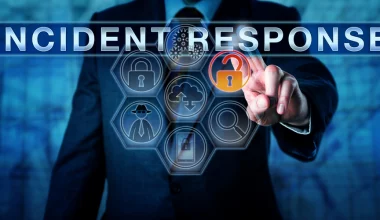Flipper Zero is a portable Tamagotchi-like device that can interact with access control systems. This interactive toy has multiple abilities including being able to read, copy, and emulate radio-frequency (RFID) tags, remote controls, or digital access keys. It was introduced in 2020 when it raised 4.8 million dollars through a crowdfunding campaign. The first units were shipped out 18 months later just like what they promised during the Kickstarter campaign. You feed this virtual pet by playing different games with it and use its abilities to change how it looks and feels – making it happy or sad; depending on whether you want it to challenge you or not.
Technical Specifications
The electronic schematics and firmware of the Flipper Zero project are open-sourced under the GNU General Public License. To date, the device does not fit into the open-source hardware category because printed circuit boards were not open-sourced; this excludes enthusiasts from making their copies of the device without a knowledge base in electrical engineering
Internal Hardware
Flipper Zero features a dual-core ARM architecture STM32WB55 micro controller with 256Kb of RAM and 1MB of Flash storage. Flipper Zero’s first core operates at 64MHz, while its second core runs at 32MHz. This allows for the efficient run time needed to handle both Flipper Zero’s main firmware and ST Microelectronics proprietary firmware that implements Bluetooth Low Energy protocol; as well as providing superior data security when processing sensitive information through two different operating systems. To transmit signals over various frequencies in 300-900 MHz ranges, we rely on Texas Instruments’ CC1101 chips – which support both ASK and FSK modulation schemes – but lack the capacannotransmissions without being configured beforehand by the user for optimum performance.
About firmware
The Flipper Zero firmware is based on the FreeRTonrating system, with its own way of financing the hardware layer. It’s written in C language mixed with some C++ when necessary for third-party stem uses multitasking when combined with an event-driven to manage the interactions between applications and services executing on one address space while communicating through a series of queues and events. This system can run either on Random-Access Memory (RAM) or Read-Only Memory (ROM). ROM execution is used for over-the-air(OTA) Firmware Updates.
The firmware has a variety of components, such as FuriCore–which enables developers to interact with the scheduler and the threads–and includes an abstraction layer that extends FreeRTOS scheduler functionality.
FuriHal enables access to specific low-level device functions. Services describe the functionality of devices themselves and include sub-parts link sub-parts or automation capability; there are also auxiliary modules.
Tools exist for software developers who want to use this type of technology–a part being code libraries for things like wireless connectivity, GPS tracking, camera support, system management, and ment–and provide tools tailored specifically towards the project at hand; even things like offline editing software for those interested in 3D modeling for modeling in this space. And because all these aforementioned items do so much work on behalf of their creators – files can be saved locally or onto cloud storage with ease while developers never have to worry about modifying every single line themselves if they’re just working off SCons/Python scripts.
Overview
Flipper Zero is designed for interacting with various kinds of access control systems, Radio Protocols, RFID, Near Field Communication (NFC), and infrared signals. Flipper Zero doesn’t need a computer or phone to work – users can control it through its five-position D-pad and separate Back button. Its monochrome orange backlight LCD screen displays 128×64 pixel resolutions in all-black letters on an off-white background. It also has GPIO holes at the top so you can connect different modules if you want to perform certain actions like updating firmware or loading up new features onto the device which requires a connection to computers or smartphones with the developer’s software installed.








2 comments